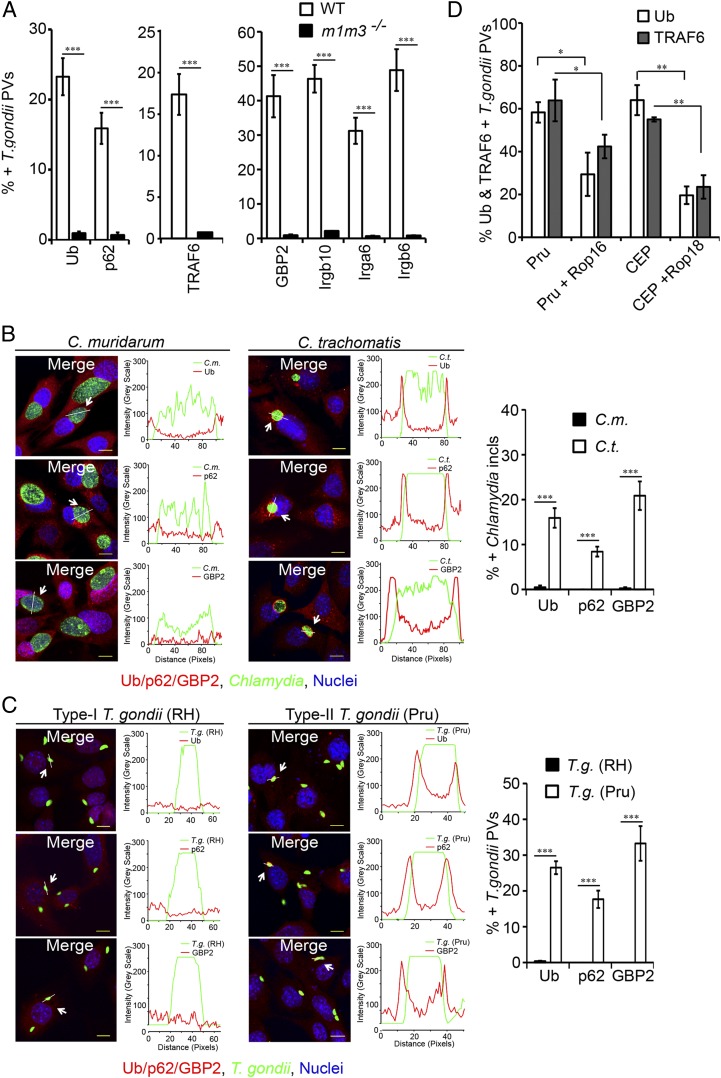Fig. 8.
Hypervirulent strains of T. gondii and Chlamydia interfere with IRG-mediated PV ubiquitination. (A) Localization of ubiquitin (Ub), p62, GBP2, TRAF6, and the GKS proteins Irgb10, Irga6, and Irgb6 to type II T. gondii PVs in IFNγ-primed WT and m1m3−/− MEFs was assessed at 1 hpi. (B) WT MEFs were infected with either C. muridarum or C. trachomatis and treated with IFNγ at 3 hpi. At 20 hpi, inclusions were labeled with anti-Chlamydial LPS (green) and monitored for colocalizaiton with ubiquitin (red) or p62 (red) or GBP2 (red). ***P < 0.0005 relative to C. trachomatis infection (two-tailed unpaired t test). Line tracings of fluorescent intensities are shown. (C) IFNγ-primed WT MEFs were infected with either GFP+ type I strain T. gondii RH or GFP+ type II strain Pru and assessed for colocalization with ubiquitin (red) or p62 (red) or GBP2 (red) at 1 hpi. (D) IFNγ-primed WT MEFs were infected with the indicated transgenic T. gondii strains and assessed for the localization of ubiquitin and TRAF6 to PVs. Experimental data for D were generated in the E.-M.F. laboratory. *P < 0.05; **P < 0.005; ***P < 0.0005 (two-tailed unpaired t test); mean ± SD; n = 3. (Scale bar, 10 μm.)

